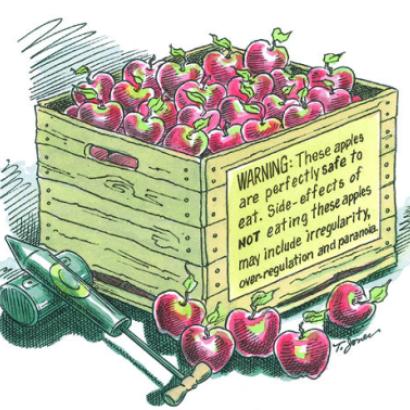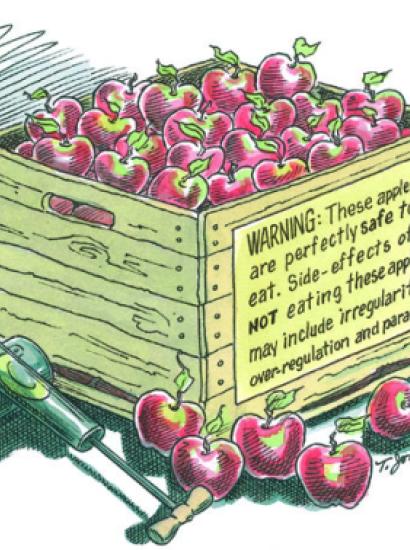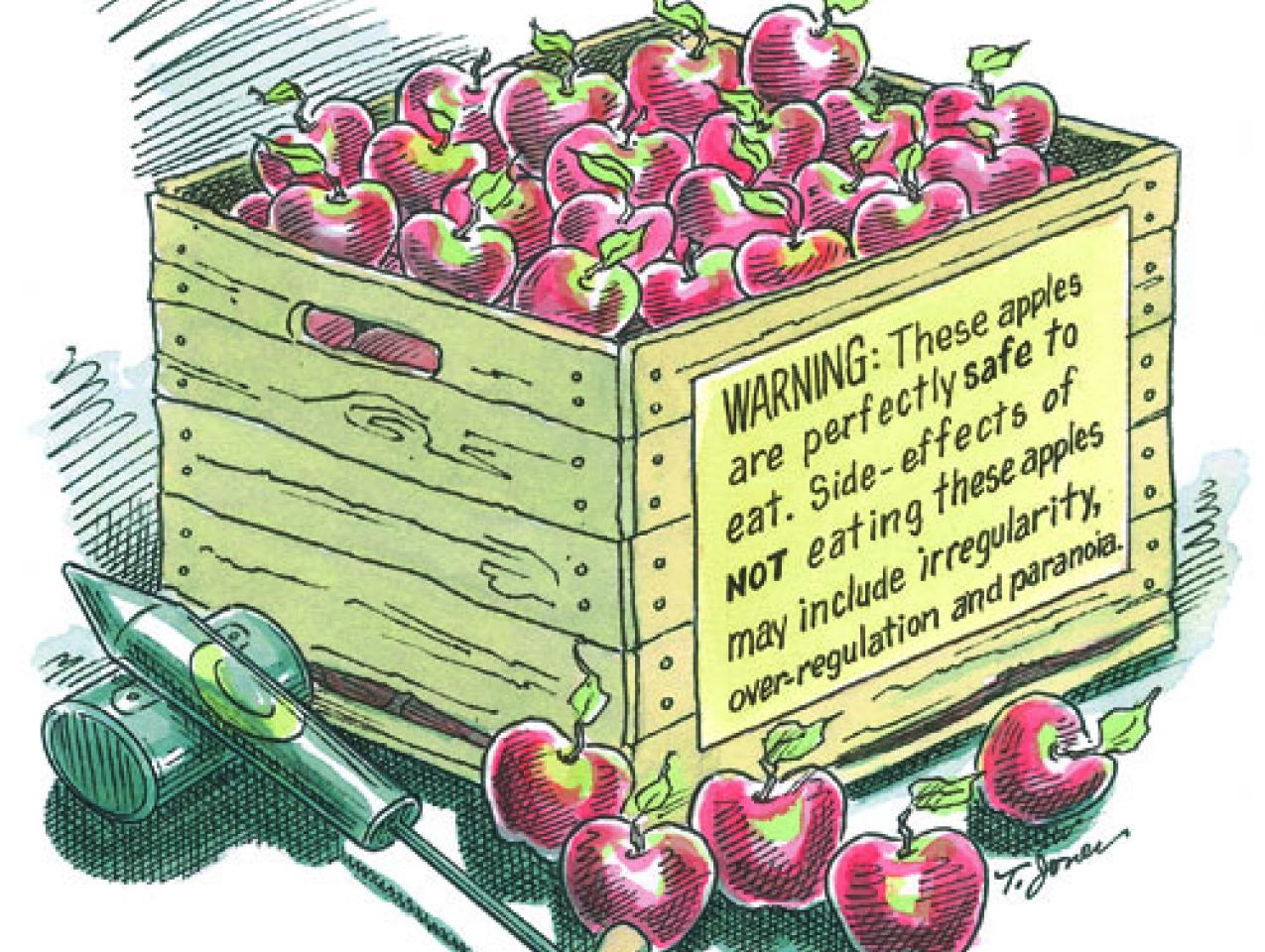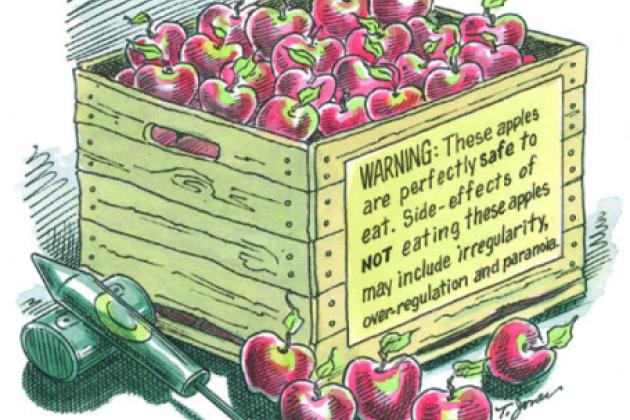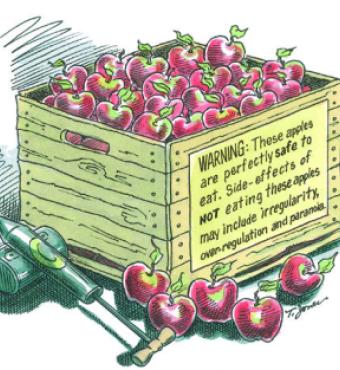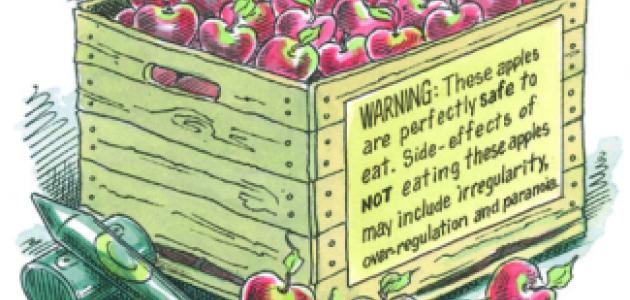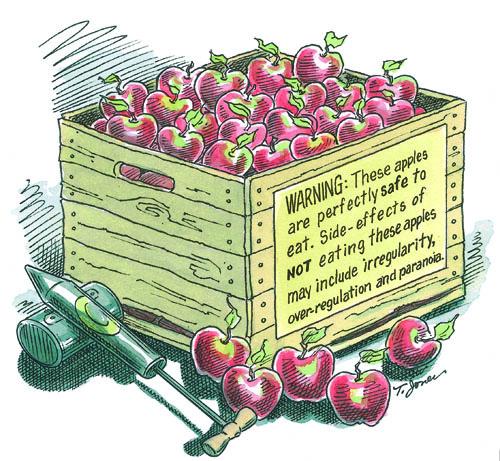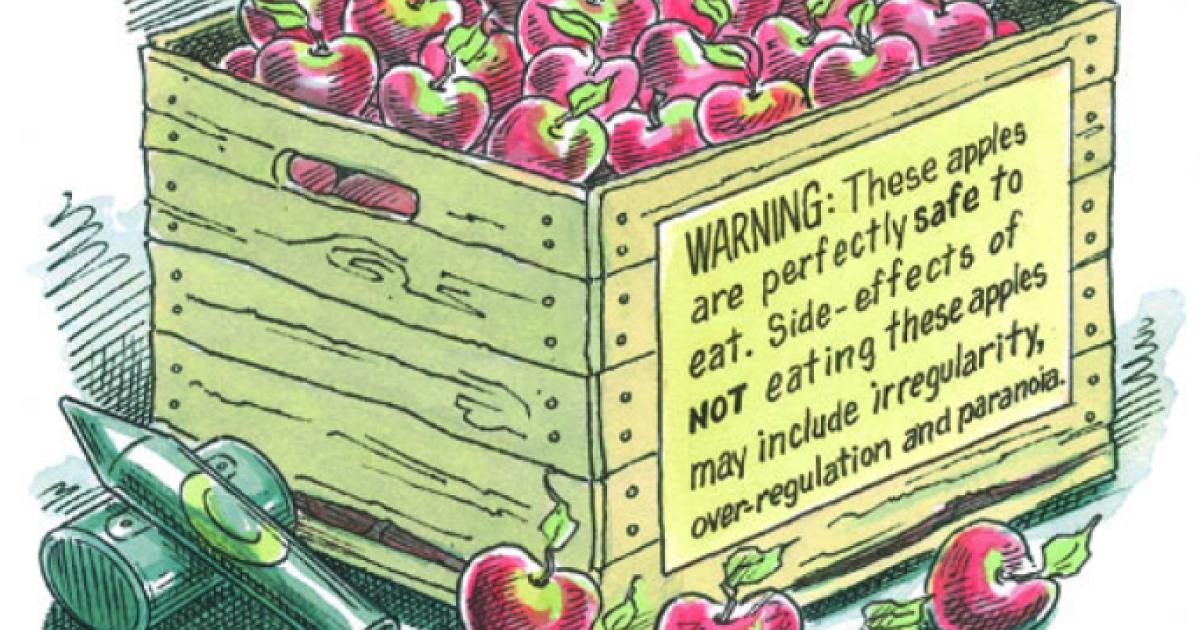- Education
- Energy & Environment
- Science & Technology
Conflicting advice from “experts” often confuses consumers. Some counsel low-carb, high-fat diets; others, low-fat Mediterranean ones. Some tout the benefits of hormone replacement therapy for menopausal symptoms while others emphasize the risks. Scientific studies into these and other subjects are sometimes inconsistent. But while consumers may puzzle over differing views, they can be dangerously misled by activist groups whose agenda is baseless fear-mongering in the interest of fundraising.
Consider the Environmental Working Group (EWG), leader of the “cell phones cause cancer” nonsense. Another of its lame hobbyhorses, trotted out regularly, is the supposed danger of pesticides on fruits and vegetables. And every time—like Lucy fooling Charlie Brown into trying to kick the football once more—the media buy into it, and fall flat.
The pesticide alarmism was debunked last year by an independent, peer-reviewed study by researchers at the University of California, Davis. Unfortunately, the media responded with deafening silence, in contrast to the way they gleefully trumpeted the activists’ earlier, ill-founded warnings.
The EWG pesticide alarmism began in 1995 when, backed by such eminent scientific entities as the Barbra Streisand Foundation, the organization published its first “Dirty Dozen,” a list of produce that supposedly contained the highest levels of chemical pesticides. The annual list, which last year included some of the most nutritious and delicious components of our diet—including peaches, strawberries, apples, blueberries, nectarines, cherries, and grapes—is accompanied by an admonition to limit consumption of those kinds of fresh produce and to “avoid conventionally grown varieties” in favor of the more costly organic options.
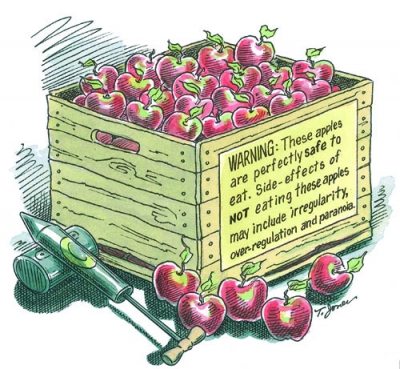
However, the UC-Davis study, published in the Journal of Toxicology, showed that 90 percent of the cases “exposed” in EWG’s 2010 list involved levels of pesticides a thousand times lower than the chronic reference dose (the level of daily exposure likely to lack an appreciable risk of deleterious effects during a lifetime of chronic exposure). Study authors Carl Winter and Josh Katz concluded, “The potential consumer risks from exposure to the most frequently detected pesticides on the ‘Dirty Dozen’ list of foods are negligible and cast doubts as to how consumers avoiding conventional forms of such produce items are improving their health status.”
Moreover, as Winter wrote in a separate commentary for the International Food Information Council (IFIC), “Three-quarters of the pesticide/commodity combinations [identified by the EWG] showed consumer exposure estimates more than one million times lower than doses given to laboratory animals continuously over their entire lifetimes that do not show adverse effects.”
These are critical observations because, as has been known from antiquity, the dose makes the poison; in other words, a substance is toxic only if the dose and length of exposure are sufficient to cause damage—a fundamental principle of toxicology seemingly alien to the EWG. Moreover, the EWG’s main recommendation—“buy organic”—is belied by the fact that many organically grown versions of the “dirty” products were also “contaminated.” As Winter and Katz pointed out, the same data from the Department of Agriculture Pesticide Data Program used by the EWG indicate that there are pesticide residues in nearly a quarter of organic food samples.
Winter presented his report at the American Dietetic Association’s Food and Nutrition Conference and Expo. The food police on hand were outraged with his findings, but the best they could muster were ad hominem attacks on Winter and IFIC, such as, “Google Carl Winter and industry front group IFIC and you will understand.” EWG’s senior communications and policy adviser, Don Carr, took to Twitter to call IFIC “industry goons.” So much for scientific debate.
The Dirty Dozen list is always a headline grabber for EWG; no wonder the media-hungry activist group keeps updating the same worthless analysis each year. The group cleverly publishes the report every May or June, just as Americans are getting excited about the prospect of summer produce.
The media have failed dismally to do their homework. Reporters consistently fail to ask pertinent questions about dose, exposure, likelihood of actual harm, or compliance with federal regulations. Had they done so, they would have discovered that the pesticide tolerances in food established by the EPA are extraordinarily conservative—that is, highly risk averse—and that even these stringent limits are exceeded less than 1 percent of the time. They even had the advantage this year of the UC-Davis report having been published in a scientific journal weeks before the EWG press release went out. But reporters and editors recycled the same old story, touting the Dirty Dozen’s supposed dangers while ignoring the science that belied the warnings.
More to the point, according to Bruce Ames, an eminent biochemist at UC-Berkeley, our foods contain ten thousand times more natural, endogenous pesticides (the result of plants evolving their own natural defenses against fungi and predators) than synthetic ones, but many of the latter are actually less harmful. Although the minuscule amounts of synthetic pesticides in our foods pose negligible health risks, some activists actually advise consumers not to eat fruits and vegetables at all if they can’t afford organic varieties, despite a hundred years of evidence that those who eat the most conventionally grown fruits and vegetables have half the cancer rates for practically every type of cancer and live longer than those who eat less.
We will never convince the dedicated ideologues of the error of their ways, but the media can and must do better at presenting accurate and complete information.








